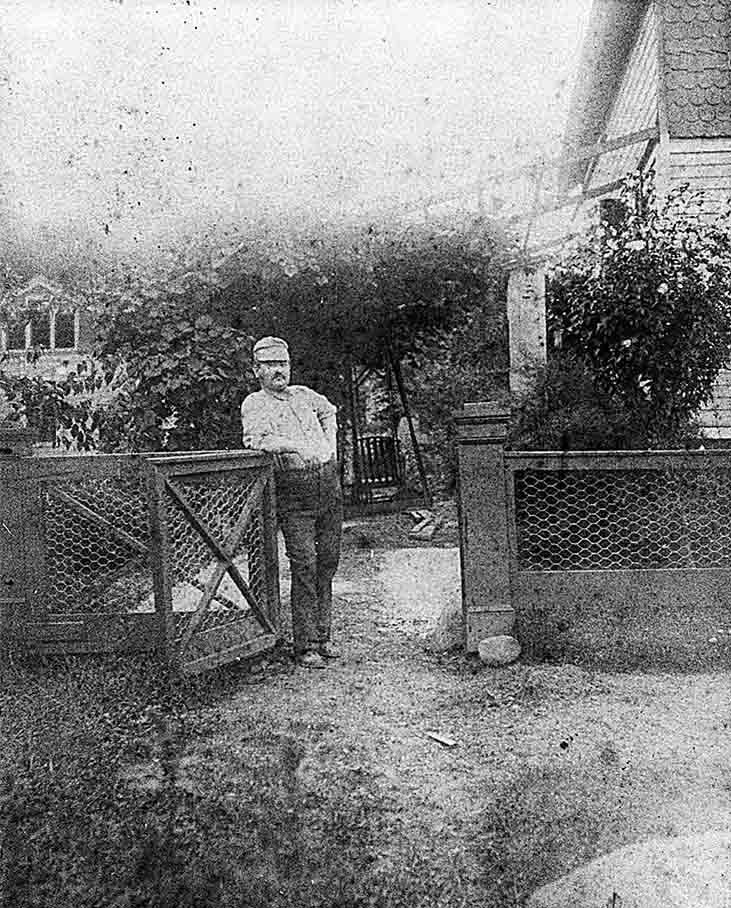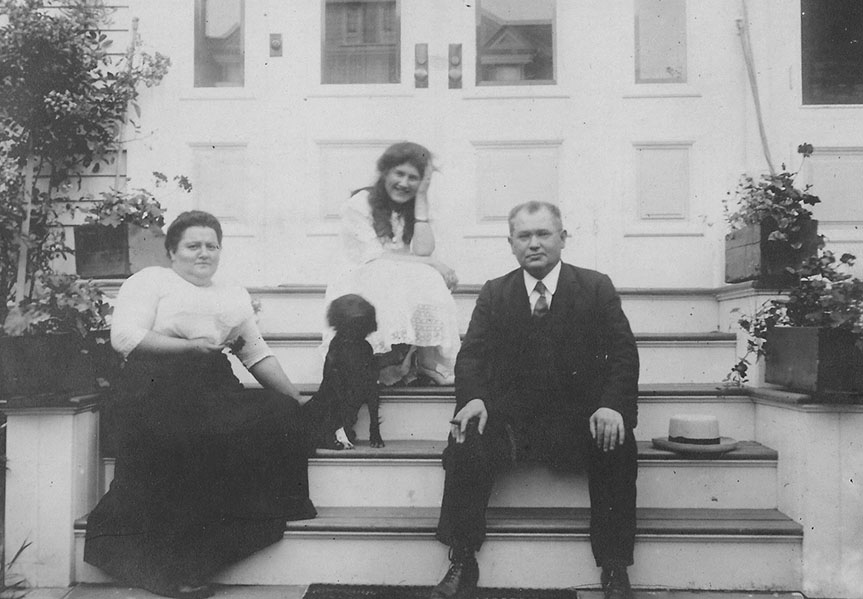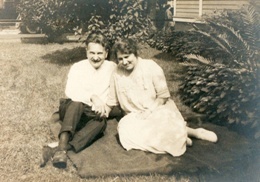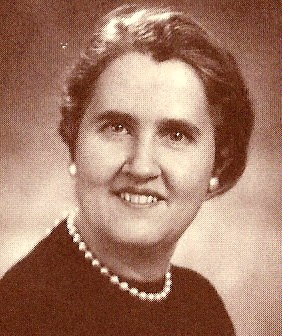
About the Family
Born in 1861, Conrad Voelcker (later spelled Voelker) emigrated from Edenkoben, a small town in Germany's Palantine region, near the Rhine River. He arrived in New York in 1881, at the start of a decade that would see more than 1.4 million Germans emigrate to the United States. Conrad became a successful publisher of German language newspapers.
In 1899, the year after Queens became part of New York City, Conrad, his wife, Elizabeth (1875-1919), and their young daughter, Theresa (1898-1992), moved to Flushing, purchasing the property for $4,500. The neighborhood, just beyond Flushing's bustling downtown, was developing as a new middle-class suburb called Murray Hill, offering comfortable living with an easy commute into Manhattan on the Long Island Railroad.
After Conrad’s death in 1930, his daughter, Theresa, her husband, Dr. Rudolph Orth (1887-1948), and daughter, Elisabetha (1926-1995) moved into the house. Dr. Orth, the son of German immigrants, graduated from Cornell University Medical School in 1909. During World War I he served in France with distinction as an army surgeon. In 1921 he was appointed as a police surgeon with the New York City Police Department and served in that capacity until his retirement.
In 1935, the Orth family adopted a second daughter of similar age to Elisabetha, who they named Barbara. She became a nurse and raised a family. Elisabetha trained to be a teacher and loved gardening, birding, the arts and history. She remained her mother's life-long companion.
All three generations of the family were philanthropic. Conrad provided funds for his hometown of Edenkoben to establish a foundation that still exists today. Theresa was active in Flushing community affairs and with her husband donated a building to serve as the Queens Police Post of the American Legion. Elisabetha ensured that her family's legacy would be remembered by donating the Voelcker Brothers newspapers to the Pfalz regional archive in Germany. She later bequeathed her estate to establish the Voelker Orth Museum, Bird Sanctuary and Victorian Garden.
In 1999, a newly formed board of trustees set to work on restoring the property. Family photographs from the early 1900s helped guide that work. Many of the family furnishings remained and community members donated items to contribute to an understanding of local home life and activity in the early 20th century. The Museum's period rooms reflect the late 1890s to early 1930s, when the Orth family made it their home.
With the exterior appearance of the original storage garage, the property includes a multi-use/classroom building that is utilized for workshops and with visiting school groups. Both the buildings have physically accessible entrances and restrooms.
The Victorian-style garden welcomes and educates visitors and provides a habitat for backyard birds and wildlife. It contains many of the plants and uses gardening techniques typical of 19th century home gardens, including two honeybee colonies. It is used for outdoor events spring through fall and opened to visitors year-round.
From colonial period farmland homesteads, later a suburb, Murray Hill-Flushing continues to attract middle-class immigrant families in search of good homes, good neighbors and a comfortable life. Today, Flushing looks quite different than those 100 years the Voelker-Orth family called it home – but the house and grounds remain a welcoming oasis to all visitors.
 |
 |
Conrad Voelcker in his garden, c.1900 |
Voelcker Family on front steps, c.1915
|
 |
 |
Rudolph
and Theresa Orth, c.1930 |
Elisabetha Orth, c.1976 |